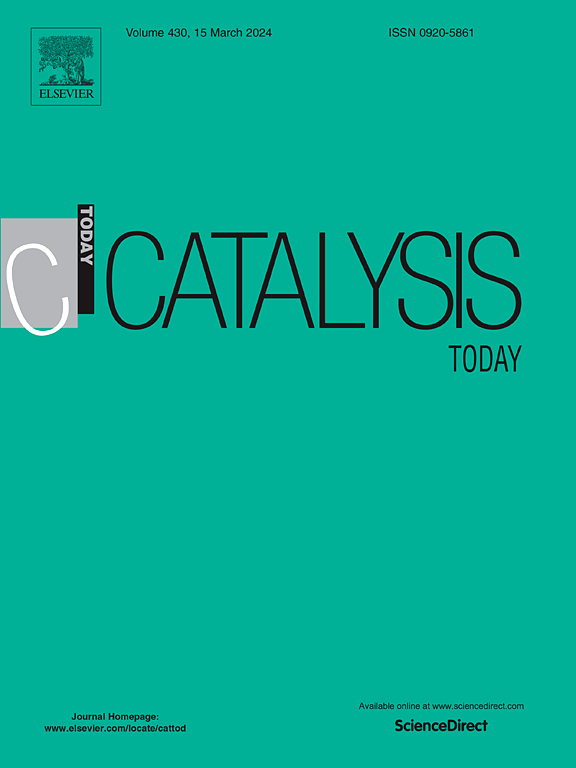In situ visualisation of zeolite anisotropic framework flexibility during catalysis
IF 5.2
2区 化学
Q1 CHEMISTRY, APPLIED
引用次数: 0
Abstract
Zeolites exhibit framework flexibility driving their chemical and catalytic properties. Since the zeolitic pores are extremely small, a slight strain generated in the crystal induces compelling changes in shape, connectivity, accessibility, and the framework chemical properties. These modifications affected the adsorption and desorption of reactants/products and the diffusion within the channels during reaction. Using in situ 3D Bragg coherent X-ray diffraction imaging, we unveil the dynamics of the zeolite structure during catalysis, contraction and/or expansion of its framework also known as zeolite framework flexibility. We imaged three-dimensionally a single faujasite zeolite crystal during the ethanol dehydration reaction revealing anisotropic lattice dynamics simultaneously to guest molecules formation. Understanding zeolite flexibility could permit to tune zeolites properties towards potentially higher adsorption and selectivity.
催化过程中沸石各向异性框架柔性的原位可视化
沸石在化学和催化特性方面表现出框架灵活性。由于沸石孔隙极小,晶体中产生的微小应变就会引起形状、连通性、通达性和框架化学特性的显著变化。这些变化影响了反应物/产物的吸附和解吸以及反应过程中通道内的扩散。利用原位三维布拉格相干 X 射线衍射成像技术,我们揭示了沸石结构在催化过程中的动态变化、其框架的收缩和/或扩张(也称为沸石框架的灵活性)。我们对乙醇脱水反应过程中的单个faujasite沸石晶体进行了三维成像,发现在客体分子形成的同时,晶格也发生了各向异性的动态变化。了解沸石的柔性可以调整沸石的特性,从而提高吸附性和选择性。
本文章由计算机程序翻译,如有差异,请以英文原文为准。
求助全文
约1分钟内获得全文
求助全文
来源期刊

Catalysis Today
化学-工程:化工
CiteScore
11.50
自引率
3.80%
发文量
573
审稿时长
2.9 months
期刊介绍:
Catalysis Today focuses on the rapid publication of original invited papers devoted to currently important topics in catalysis and related subjects. The journal only publishes special issues (Proposing a Catalysis Today Special Issue), each of which is supervised by Guest Editors who recruit individual papers and oversee the peer review process. Catalysis Today offers researchers in the field of catalysis in-depth overviews of topical issues.
Both fundamental and applied aspects of catalysis are covered. Subjects such as catalysis of immobilized organometallic and biocatalytic systems are welcome. Subjects related to catalysis such as experimental techniques, adsorption, process technology, synthesis, in situ characterization, computational, theoretical modeling, imaging and others are included if there is a clear relationship to catalysis.
 求助内容:
求助内容: 应助结果提醒方式:
应助结果提醒方式:


